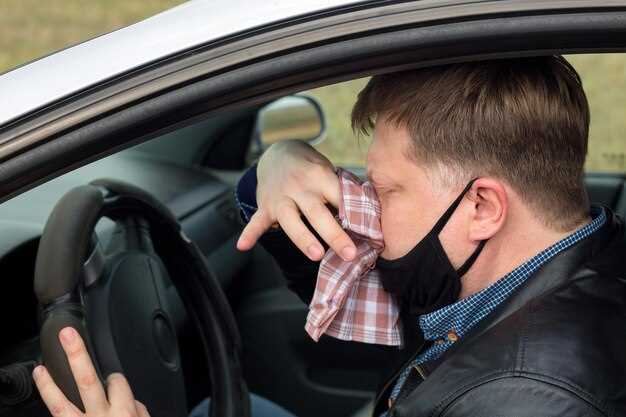
When it comes to vehicle performance, suspension plays a critical role in ensuring a smooth and comfortable ride. However, many drivers encounter various noises that can emanate from the suspension system. These noises can range from subtle creaks to loud clunks, often indicating underlying issues that require attention.
In this article, we will explore the common causes of suspension noises, shedding light on the various components that may be at fault. Understanding these causes is crucial for maintaining vehicle safety and performance, as ignoring such symptoms can lead to more serious mechanical failures in the long run.
Additionally, we will provide practical solutions for diagnosing and addressing suspension-related noises. From inspecting worn-out bushings to checking for loose parts, drivers can take proactive measures to ensure their suspension system operates quietly and effectively. By the end of this guide, you will have a clearer understanding of how to tackle suspension noises and enhance your driving experience.
Identifying Common Suspension Noises and Their Origins
Understanding the origins of suspension noises is crucial for proper vehicle maintenance. One of the most prevalent issues arises from the condition of bushings. These rubber or polyurethane components function as cushioning elements in the suspension system, and their deterioration can lead to distinct sounds.
Here are some common suspension noises and their likely origins:
| Noisy Condition | Possible Cause |
|---|---|
| Clunking Noise | Worn or damaged bushings, especially in the control arms or sway bar links. |
| Squeaking Noise | Dry or worn bushings that require lubrication or replacement. |
| Rattling Noise | Loose suspension components, possibly due to worn mounts or bushings. |
| Grinding Noise | Severely worn bushings that have allowed metal-on-metal contact within the suspension system. |
| Bouncing Noise | Failed or excessively worn shock absorbers, impacting the overall stability and noise levels. |
Each of these noises typically points to specific issues within the suspension system that require attention. Identifying the source promptly can prevent more severe damage and ensure a smoother ride.
Impact of Worn Bushings on Suspension Performance
Worn bushings significantly affect suspension performance, leading to various issues and increased noise. Bushings are rubber or polyurethane components that connect different parts of the suspension system, allowing for flexibility and movement. When these bushings deteriorate, they lose their ability to absorb vibrations and impacts, resulting in a harsher ride.
The first noticeable effect of worn bushings is the noise generated during suspension travel. Drivers often experience clunking or rattling sounds as the components move against one another without the necessary cushioning. This noise can indicate that the bushings have degraded to the point where they can no longer perform their intended function effectively.
Additionally, worn bushings contribute to poor alignment and stability. As they degrade, the suspension system may respond unpredictably to road conditions, causing a lack of control while driving. This can lead to uneven tire wear and compromised handling, further emphasizing the importance of maintaining bushings in optimal condition.
Replacing worn bushings can restore suspension performance, reduce noise, and enhance overall driving experience. Routine inspections and maintenance are essential to identify signs of wear early and prevent more extensive damage to other suspension components.
Diagnosing Clunking and Creaking Sounds in Your Vehicle
Identifying clunking and creaking sounds in your vehicle is essential for maintaining its suspension system. These noises often indicate underlying issues that require prompt attention to ensure safe driving and vehicle longevity.
Clunking sounds typically arise when components in the suspension system, such as struts, shocks, or control arms, experience wear or damage. A common cause of clunking is the failure of bushings or joints, which can lead to metal-on-metal contact. Inspecting these parts can reveal signs of deterioration, such as cracks or excessive play.
Creaking noises, on the other hand, often result from lubrication issues. When suspension components like coil springs or sway bar links lack adequate grease, friction may produce a creaking sound during the vehicle’s movement. Regularly lubricating these parts can mitigate these noises and prevent further damage.
To diagnose the source of these sounds, it’s important to conduct a thorough inspection of the suspension system. Start by observing the vehicle while it’s in motion; listening closely for when the noise occurs–during acceleration, braking, or turning can help isolate the issue. Additionally, visually examine the suspension parts for any visible wear, such as corrosion or loose fittings.
Engaging a professional mechanic for a more thorough inspection is advisable if you are unable to pinpoint the source of the noise. They can provide insights on necessary repairs or replacements, ensuring that your suspension system operates smoothly and quietly.
When to Replace Bushings: Signs of Wear and Damage
Bushings are crucial components in your vehicle’s suspension system, providing a cushion between moving parts to reduce friction and absorb shock. Over time, these components can wear out, leading to noticeable symptoms that indicate the need for replacement.
One primary sign of worn bushings is an increase in noise. You may hear clunking or rattling sounds originating from the suspension area, especially when driving over bumps or uneven surfaces. This noise often indicates a loss of cushioning, allowing metal components to make contact with each other.
Another indication of potential bushing failure is the presence of vibrations felt through the steering wheel or the chassis. As bushings deteriorate, they can no longer adequately isolate vibrations, resulting in a harsher ride and compromised handling.
Visual inspection can also reveal signs of wear. Look for cracked, split, or distorted bushings, which may not be functioning as intended. If you notice excessive play in the suspension components when testing them by hand, it’s likely that the bushings are damaged and need replacing.
Failure to replace worn bushings can lead to further suspension issues, including misalignment and increased tire wear. Therefore, if you observe any of these warning signs, it is advisable to consult a professional mechanic for evaluation and potential replacement of the bushings to ensure optimal suspension performance.
DIY Solutions for Suspension Noise Troubleshooting
Suspension noise can be a frustrating issue for vehicle owners. Identifying the source and addressing it promptly is essential for maintaining vehicle performance and comfort. Here are some DIY solutions to help troubleshoot and resolve suspension noise, particularly focusing on bushings and other common causes.
Before diving into solutions, it is crucial to understand the types of noises that might indicate a suspension issue:
- Creaking: Often a sign of worn or dry bushings.
- Clunking: May indicate loose parts or damaged components.
- Popping: Can be a result of broken or failing bushings.
Here are some steps you can take to diagnose and potentially fix suspension noises related to bushings:
- Visual Inspection: Start with a thorough inspection of your suspension system. Look for worn, cracked, or damaged bushings. Pay special attention to the control arms, sway bars, and strut mounts.
- Check for Movement: With the vehicle safely raised, manually check for any play in the suspension components. Wiggle control arms and sway bars to see if there is any excessive movement indicative of failing bushings.
- Lubricate Bushings: If the bushings appear dry or squeaky, apply a suitable lubricant designed for automotive use. This may temporarily alleviate noise caused by friction within the bushings.
- Replace Worn Bushings: If bushings are cracked, torn, or excessively worn, replacement may be necessary. Remove the old bushings using appropriate tools and install new ones according to manufacturer specifications.
- Examine Other Components: While focusing on bushings, don’t ignore other suspension components such as shocks, struts, and ball joints. Inspect them for any signs of wear or damage that may also contribute to noise.
- Road Test: After making adjustments or replacements, take the vehicle for a test drive. Listen for noise changes and ensure that any previous sounds have been resolved.
By following these DIY troubleshooting steps, vehicle owners can effectively identify and address suspension noise issues. Early detection and repair can lead to a smoother ride and prevent further damage to the suspension system.
Professional Suspension Maintenance and Repair Options

Maintaining a vehicle’s suspension system is crucial for ensuring a smooth ride and optimal handling. One of the primary indicators of suspension problems is noise, which typically arises from worn or damaged components. Regular inspection and replacement of critical parts, such as bushings, can significantly reduce these unwanted sounds.
Professional maintenance services often begin with a thorough inspection of the suspension system. Technicians check for signs of wear in the bushings, shock absorbers, struts, and other components. When bushings wear down, they may create noise during driving, indicating that replacement is necessary. Addressing these issues promptly can prevent further damage and expensive repairs down the line.
In instances where noise persists after replacing bushings, mechanics may need to evaluate other elements of the suspension system. This could involve checking alignment, wheel bearings, and mounting points. Many repair shops utilize diagnostic tools to identify the source of noise accurately, ensuring that all underlying problems are addressed in a comprehensive manner.
Additionally, professional repair options may include upgrading suspension components with higher-quality materials or performance parts. This can enhance ride quality and minimize noise generation. Ensuring that the suspension system is in optimal condition not only improves driving comfort but also extends the lifespan of various components.
Regular maintenance and prompt repairs are essential for keeping the suspension system functioning correctly. Engaging a professional service helps to alleviate noise issues and contributes to the overall safety and performance of the vehicle.
